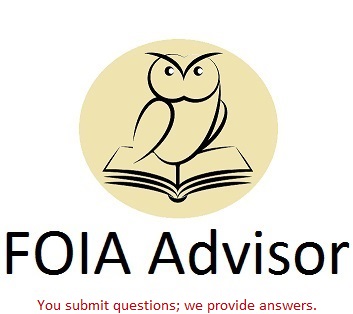Federal courts issue hundreds of decisions in FOIA cases every year. Most do not break new legal ground or attract media attention. As 2017 draws to a close, the legal eagles of FOIA Advisor -- Allan Blutstein (AB) and Ryan Mulvey (RM) -- identify the top five cases that stood out to them (in no particular order).
1. Price v. U.S. Dep't of Justice Attorney Office (D.C. Cir.) -- ruling in 2-1 decision that plea agreement waiving criminal defendant's FOIA rights "offends public policy and is therefore unenforceable."
See FOIA Advisor's previous commentary on this case here.
2. Detroit Free Press v. DOJ (S. Ct.) -- denying requester's petition for certiorari, leaving in place Sixth Circuit's decision that mugshots are protected from disclosure by Exemption 7(C).
AB Comment: Because the Sixth Circuit's decision brought itself in line with other circuits that have addressed the issue, this petition faced extraordinarily long odds.
RM Comment: And that Sixth Circuit decision, despite what the petitioner and amicus argued, still preserves Exemption 7(C)'s important balancing test for considering a person's recognized, non-trivial privacy interest in his mugshot against the public interest interest in disclosure.
3. Lucaj v. FBI (6th Cir.) -- concluding that documents exchanged between DOJ Criminal Division and foreign governments could not be protected under Exemption 5 because they did not meet the "inter-agency" or "intra-agency" threshold.
AB Comment: The court declined to expand the scope of Exemption 5 as other circuit's have done, and instead relied upon a cramped reading of Department of Interior v. Klamath Water Users Protective Assn., 532 U.S. 1 (2001).
RM Comment: Agreed. In my mind, the Klamath court was pretty clear that it was avoiding the question of whether Exemption 5's threshold requirement could be satisfied on a "consultant corollary" theory. Unlike the Native American tribes at issue in that case, I find it hard to believe that the Austrian government wasn't serving in a consulting capacity by responding to a DOJ Criminal Division "request for assistance."
4. AquAlliance v. U.S. Bureau of Reclamation (D.C. Cir.) -- finding that agency properly invoked Exemption 9 to withhold information regarding the construction, location, and depth of water wells; rejecting plaintiff's argument that the exemption applied to oil and gas wells only.
AB Comment: A rare Exemption 9 appellate case, which is enough to make this list.
RM Comment: Honestly, I'd never read an Exemption 9 case before this opinion issued.
5. Ecological Rights Found. v. Fed. Emergency Mgmt. Agency (N.D. Cal.) -- the first reported decision to cite the statutory provision enacted in 2016 that requires an agency to demonstrate that disclosure would reasonably harm an interest protected by an exemption, 5 U.S.C. § 552(a)(8)(A)(i)-- in this case Exemption 5 (deliberative process privilege).
AB Comment: It is unclear to me that the result would have been different in the absence of the so-called "reasonably foreseeable harm" provision. But I expect FOIA litigants to be citing this case for the foreseeable future.
RM Comment: I'm not surprised that the "reasonably foreseeable harm" provision was first applied in a case involving the deliberative process privilege. It seems most applicable in that context. I'm still unsure how it will work with the other exemptions. (I also don't know what the other part of the same statutory clause ("disclosure prohibited by law") adds to Exemption 3.) In any case, it will be interesting to see whether other courts require so detailed an explanation of how disclosure of specific records may harm the particular deliberative processes that they implicate.
